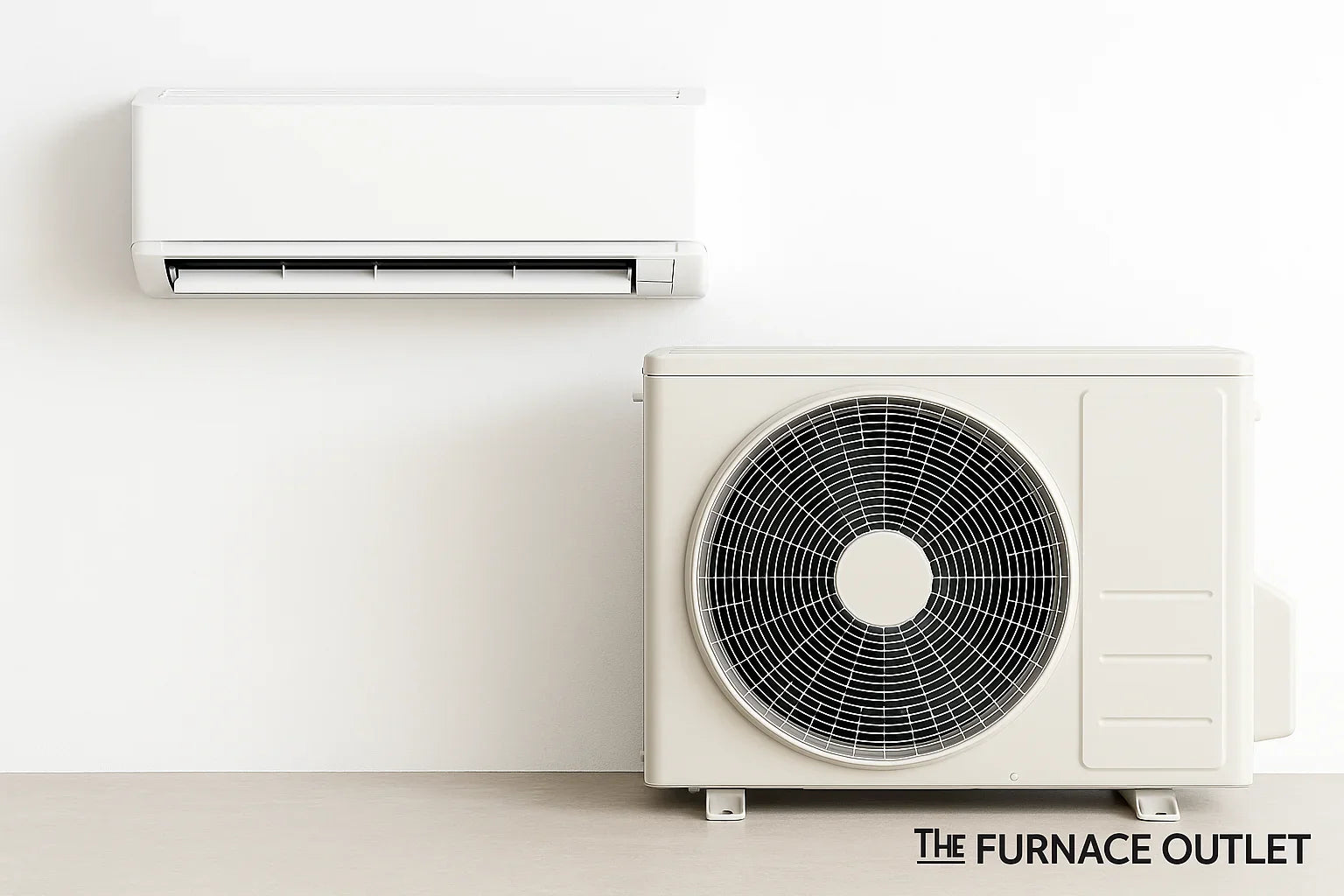Key Takeaways
-
Higher Efficiency: Mini-splits commonly reach SEER 20-30+, beating most central systems capped under SEER 20.
-
No Duct Loss: Skipping ducts prevents the 25-40 % energy waste typical in many homes.
-
Real Savings: Households spending $2,400 a year on heating/cooling often save $720–$1,200 after switching.
-
Upfront Price Gap Shrinks: Federal tax credits and local utility rebates can trim thousands off mini-split installation costs.
-
Best for Zoned Comfort: Heat or cool only the rooms you use, instead of conditioning the whole house.
Why Energy Bills Still Shock U.S. Homeowners
Electric bills in many states have risen over 15 % since 2020, yet much of that money never reaches your living space—it leaks into attics and crawlspaces through thin, unsealed ducts. This article explains how ductless mini-split systems can stop that waste, cut monthly costs, and boost comfort room by room. You’ll see clear numbers, simple checklists, and expert notes on installation, rebates, and climate performance. By the end, you’ll know whether swapping your aging central unit for a mini-split is the smart move for your home and wallet.
Duct Losses: The Hidden 25-40 % Drain on Your Wallet
Standard forced-air systems push conditioned air through long duct runs. Gaps, crushed sections, or missing insulation let that air escape—25 % to 40 % of it, according to field studies. Because mini-splits pipe refrigerant—not air—directly to each indoor head, there are almost zero distribution losses. If your ducts snake through a 120 °F attic, every leak acts like a money vent. Before spending on duct sealing, compare costs to a ductless mini-split system that eliminates the SEER Ratings Explained: Why Mini-Splits Score Higher
SEER (Seasonal Energy Efficiency Ratio) shows how much cooling you get per watt. Modern mini-splits rate SEER 20 to 30+, while many central air units plateau near 15-18. The secret is the inverter compressor: instead of cycling on/off at full blast, it modulates speed to match the exact load. That smooth operation avoids the energy spikes that plague fixed-speed units. If you’re shopping for replacements, compare our R-32 air-conditioner and air-handler systems, where SEER ratings are front and center.
Real-World Dollars: Annual Cost Breakdown
Take a family in Atlanta spending $2,400 per year on cooling and heating. Switching to a high-SEER mini-split trims usage by 30-50 %, saving $720–$1,200 every year. Multiply that by the average 15-year lifespan and you’re looking at $10,000+ in lifetime savings—money that can pay the system off entirely. Check your own numbers with our free sizing guide to see expected payback in your ZIP code.
Upfront Costs & Rebates: Reading the Price Tag Correctly
A single-zone mini-split runs $2,000–$4,000 installed; multi-zone setups for larger homes can climb over $10 k. Central HVAC with new ducts often lands in the same range, especially once you add duct sealing or attic insulation. The current Federal 25C tax credit offers up to $2,000 back on qualifying heat-pump mini-splits, and many utilities layer on $300–$1,500 rebates. Financing is optional through our HVAC financing plan, letting homeowners spread payments without high interest.
Zoned Comfort: Conditioning Only the Spaces You Use
Why chill the guest room at 72 °F all summer if nobody sleeps there? Mini-splits give each room its own thermostat, so you cool the kitchen during dinner and the bedroom at night—no more arguing over one central setting. This zoning translates directly into savings and comfort. For DIY upgrades in additions or garages, browse DIY ductless mini-splits that include pre-charged lines for quick hookups.
Climate Performance: From Desert Heat to Polar Vortex
Early mini-splits struggled below freezing, but today’s low-ambient models keep full capacity down to -15 °F. In hot, dry climates like Phoenix, the high SEER shines by squeezing every watt. If you face frigid Iowa winters, choose a unit labeled “hyper-heat” or “cold-climate heat pump” to avoid backup strip heaters. Not sure? Our technicians break down climate zones and model picks in the HVAC Tips blog.
Maintenance & Air Quality: Quiet Savings You Can Breathe
Mini-split heads use washable mesh or electrostatic filters, so you skip the $100-$200 annual duct cleaning that central systems often require. The outdoor compressor ramps softly rather than clanking on, dropping noise to whisper levels—great for nurseries or home studios. Add-on plasma or HEPA filters trap pollen and smoke, a relief for allergy sufferers. Learn more about filter upgrades in our HVAC News section.
Should You Switch? A Simple Decision Checklist
Go Mini-Split If…
-
Your ducts are leaky, nonexistent, or impossible to retrofit.
-
Some rooms stay empty most days.
-
You value ultra-quiet operation and cleaner air.
-
Rebates knock at least $1,000 off install costs.
Stick with Central If…
-
Existing ducts are tight, and your home needs uniform temps.
-
Aesthetics make wall units a hard sell.
Still undecided? Compare case studies—like the PTAC sizing guide—to see real-world results.
Frequently Asked Questions
Q1. How long does a mini-split last?
Most units run 15–20 years with basic filter cleaning and annual professional check-ups.
Q2. Can I cool my whole house with mini-splits?
Yes. Multi-zone systems link one outdoor unit to several indoor heads, covering large homes efficiently.
Q3. Do mini-splits heat as well as they cool?
Heat-pump models provide efficient heating down to sub-zero temps when properly sized.
Q4. Will a mini-split raise my home’s resale value?
Energy-efficient upgrades often boost resale, especially in regions with high utility costs.
Q5. What size mini-split do I need for a 300 sq ft room?
Roughly 6,000 BTU, but always verify with a load calculation or our Design Center team.







